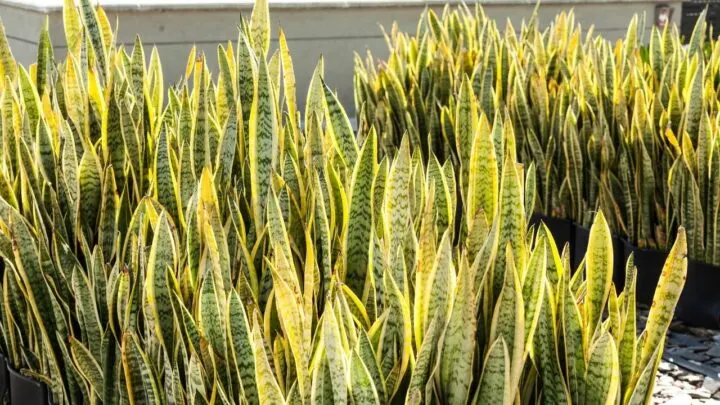You could fill an entire botanic garden with all of the types of Sansevieria in existence!
And since they are so easy to care for, you can start your own collection without much effort.
In fact, there are so many variants in the Sansevieria family that you could buy a different one every week for more than a year!
There are actually over 70 different varieties recorded.
The range includes a mix of those found in the wild that are now growing happily in homes around the world, plus cultivars created and mixed in order to grow a specific feature.
Let’s explore just some of the types of Sansevieria – sometimes known as the snake plant – in this article.
Types of Sansevieria
- Sansevieria Trifasciata
- Sansevieria Trifasciata – Moonshine
- Sanvevieria Trifasciata ‘Laurentii’
- Sansevieria Masoniana F. Variegata
- Sansevieria Robusta
- Sansevieria Futura Superba
- Sansevieria Twisted Sister
- Sansevieria Patens
- Sansevieria Zeylanica
- Sansevieria Cylindrica “Boncel”
- Sansevieria Trifasciata ‘Cylindrica’
- Dwarf Sansevieria
- Sansevieria Parva
- Sansevieria Bacularis
- Sansevieria Burmanica
- Sansevieria Francisii
- Sansevieria Bantel
- Sansevieria Cleopatra
- Sansevieria Liberica
- Sansevieria Gracilis
- Sansevieria Raffillii
- Sansevieria Senegambica
- Sansevieria Subspicata
- Sansevieria Pinguicula
- Sansevieria Whale Fin
- Sansevieria Samurai
- Sansevieria Silver Queen
- Sansevieria Trifasciata ‘Twist’
- Sansevieria ‘Golden hahnii’
- Sansevieria ‘Desert’
- Sansevieria Kirkii
- Sansevieria Whitney
Table of Contents
The different types of Sansevieria are often found mislabelled in gardening centers due to many similar types of Sansevieria in existence, the Sansevieria is a succulent that has become popular in offices and homes due to its low maintenance requirements and its striking appearance.
With those with the well-known sword-like leaves to others that bear a more cylindrical shape, you will have plenty to choose from.
Sansevieria Types
1. Sansevieria Trifasciata
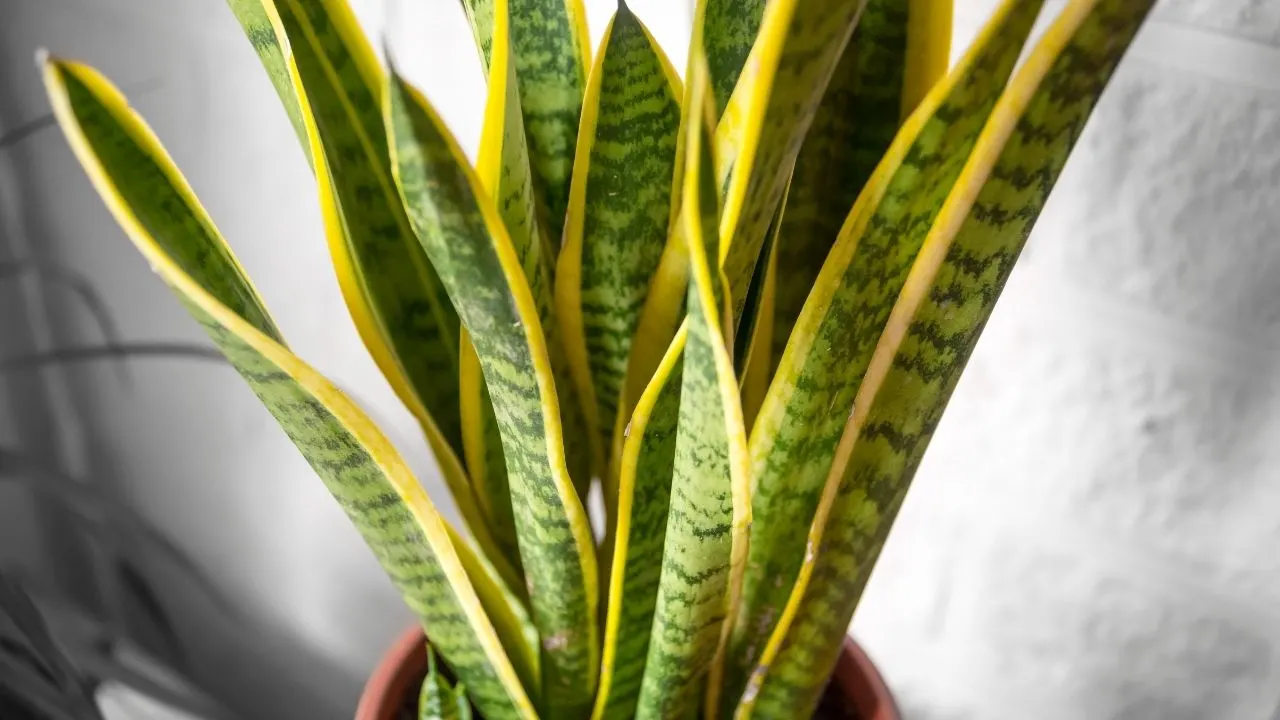
Types of Sansevieria – Sansevieria Trifasciata
One of the most common types of Sansevieria is the Sansevieria trifasciata.
It is often spotted in offices and common spaces.
The University of Arizona mentions that this is original wild species found in Africa.
The elephants just love to eat it!
It has darker leaves than some other variants which means it is particularly hardy in lower-light environments.
The “trifasciata” refers to the three markings usually identifiable on the plant. It had in the past been used as a backdrop for foliage whilst more colorful plants with flowers took center stage.
Nowadays, however, the trifasciata has come into its own, especially within modern, architecturally designed spaces.
With a bright yellow border along each leaf, it’s easy to see why.
Visit any modern office block and we bet you there is one in the lobby!
2. Sansevieria Trifasciata – Moonshine
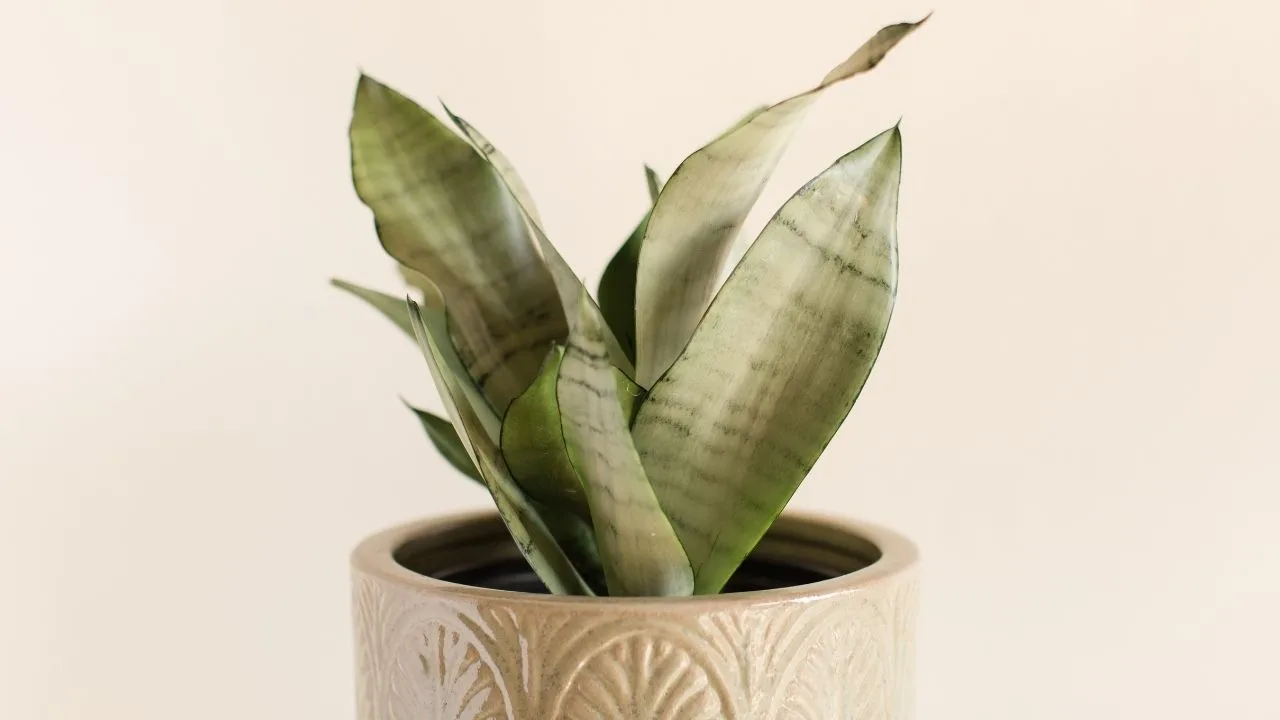
Sansevieria Trifasciata – Moonshine
This is a cultivar of the main Sansevieria trifasciata and gets its name from the slightly silvery hue on its green leaves.
This can become darker if the plant is kept in a lower light environment.
If you like the sound of the Sansevieria trifasciata Moonshine, why not read up a bit more on how to care for it here.
3. Sansevieria Trifasciata ‘Laurentii’
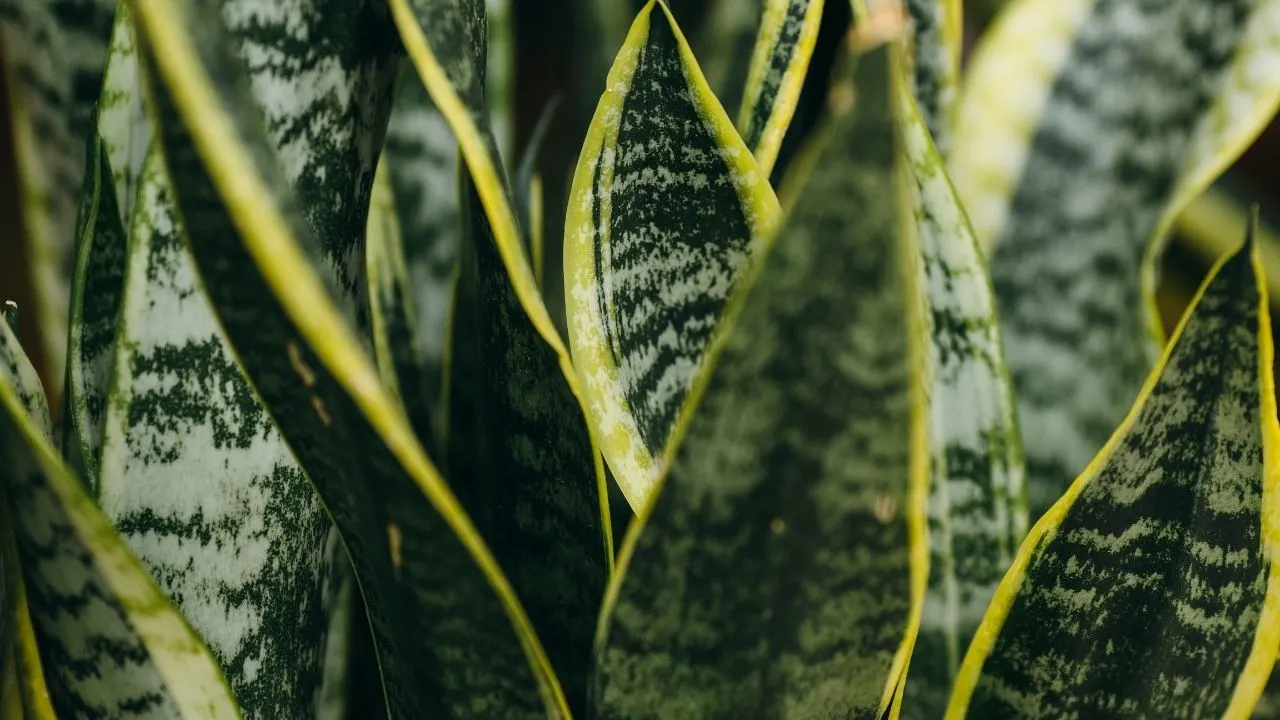
Sansevieria Trifasciata ‘Laurentii’
Get this one if you want a more dominant plant in your living space.
The Sansevieria Laurentii grows taller than most varieties of Sansevieria. In fact, it can get up to four feet in height.
It retains the trademark yellow edging as well as interesting horizontal stripes.
4. Sansevieria Masoniana F. Variegata
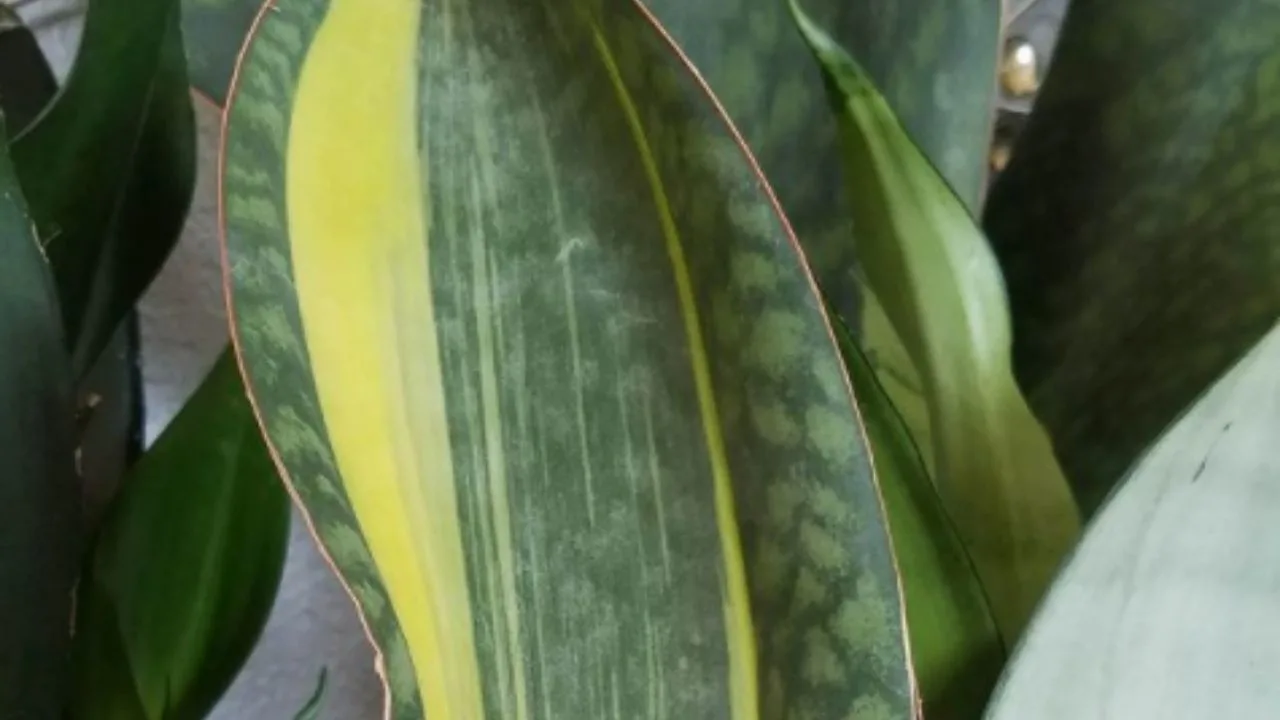
Sansevieria Masoniana F. Variegata Photo Credit: @plant_ing_joys on Instagram!
One of the strangest types of Sansevieria we ever saw was this one!
Huge great leaves grow outward – horizontally, not vertically – from the plant.
They can get up to a massive four feet in size, and often have a pale-colored center.
5. Sansevieria Robusta

Sansevieria Robusta Photo credit: @terrascapesllp on Instagram
The large and beautifully marked leaves of the Sansevieria robusta will make you an instant fan.
Not only is it a stunning specimen but it is also known for its ability to absorb carcinogenic toxins from the air and filter them away.
So, now you don’t need to feel guilty if you’re planning to purchase two or even three!
6. Sansevieria Futura Superba
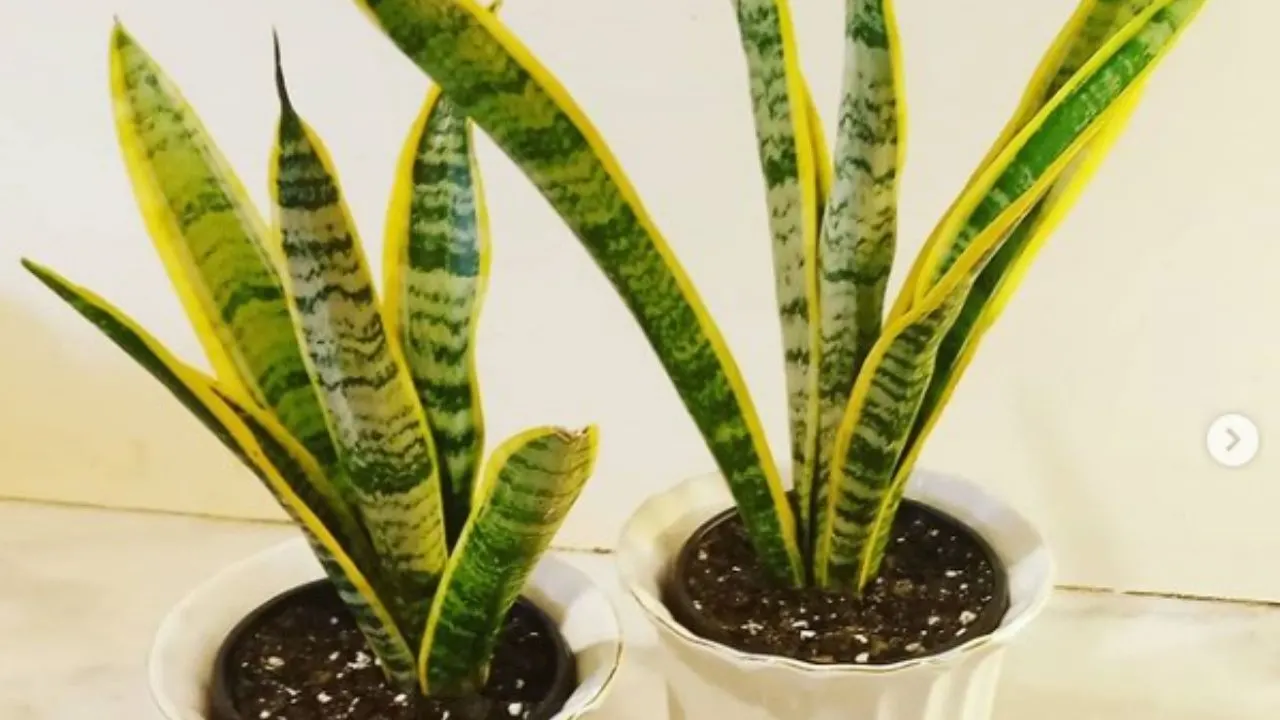
Sanseviera Futura Superba Photo Credit: @plantworld.khi on Instagram!
You’ll not forget this one quickly. The Futura Superba boasts wider and shorter leaves than on other varieties.
But it still retains the gold edges common to other types such as the trifasciata.
7. Sansevieria Twisted Sister
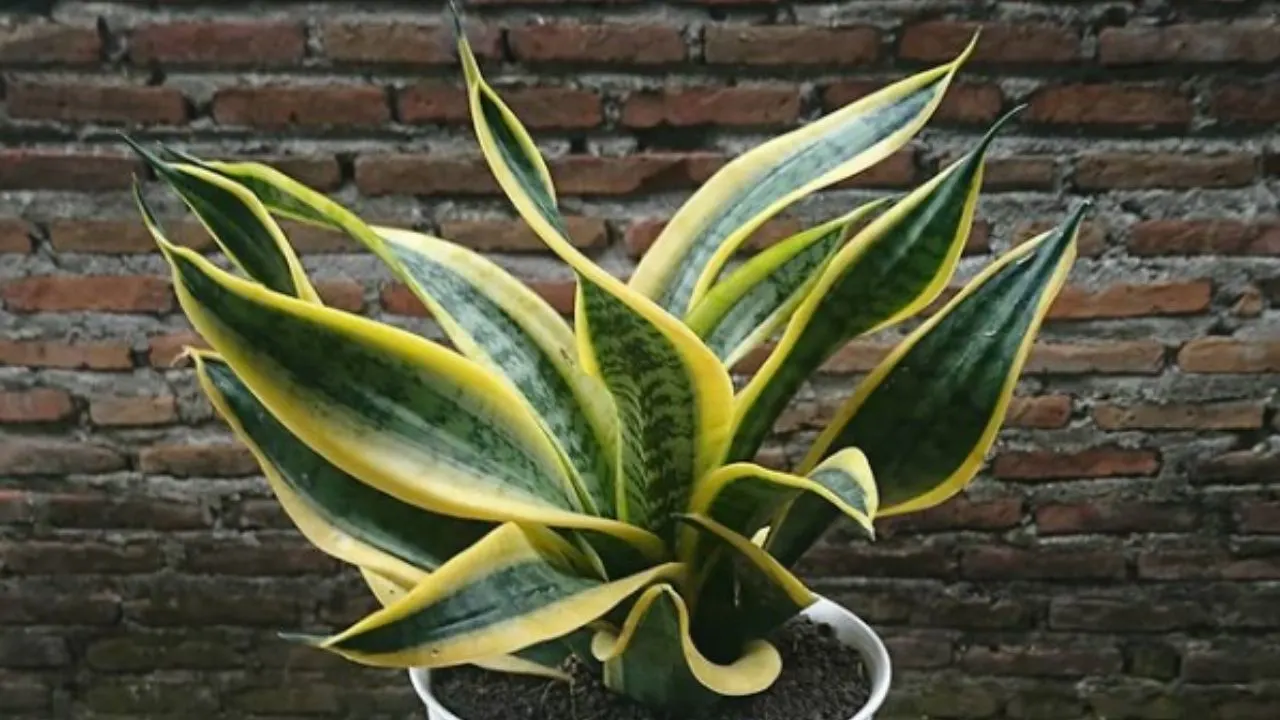
Sansevieria Twisted Sister Photo Credit: @kediriflora on Instagram!
Whilst other variants of Sansevieria get the nickname of the “mother in laws tongue”, this one is known as the twisted sister.
It gets its name from the turn in the leaves which is unlike many of the “upright sword” types.
Due to the twisting, it will only grow to around a maximum of 9 inches (24 centimeters) in height.
8. Sansevieria Patens
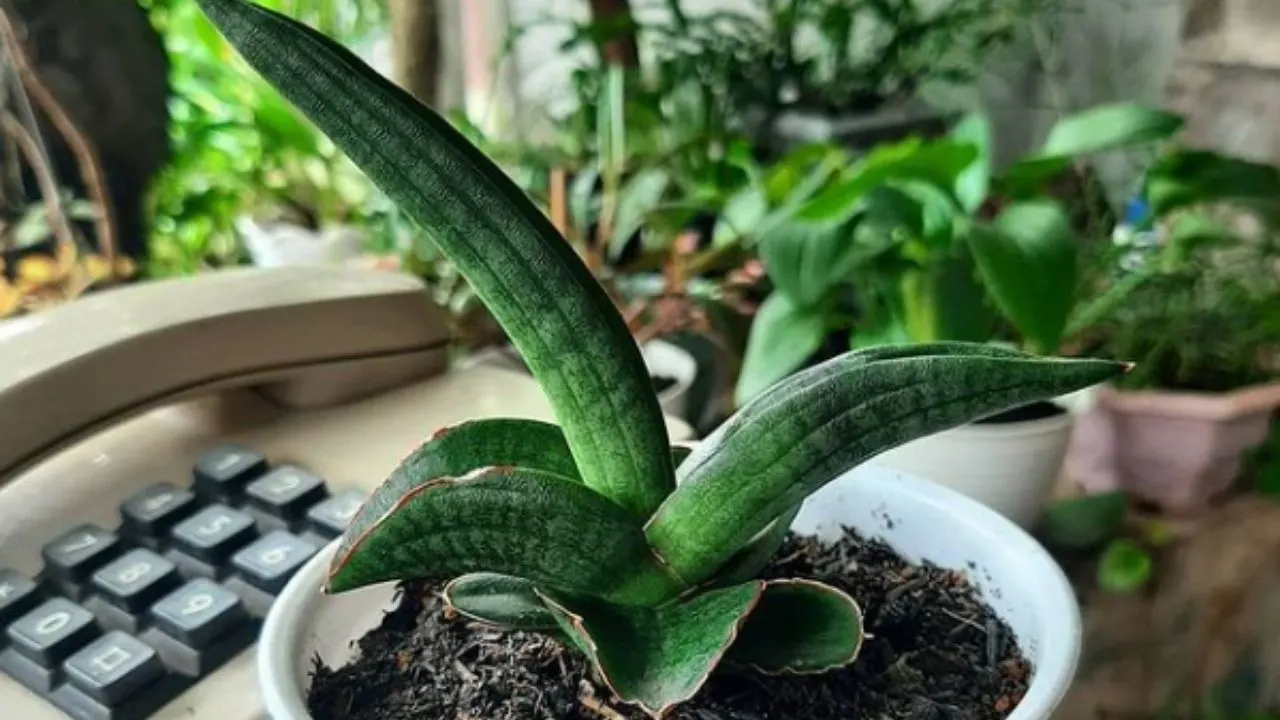
Sansevieria Patens Photo Credit: @sukulen.malang on Instagram!
Another one taking a deviation from the tall varieties of Sansevieria is the patens.
This is a particularly stunning plant, growing in a rosette pattern and developing a blueish green hue at maturity.
9. Sansevieria Zeylanica
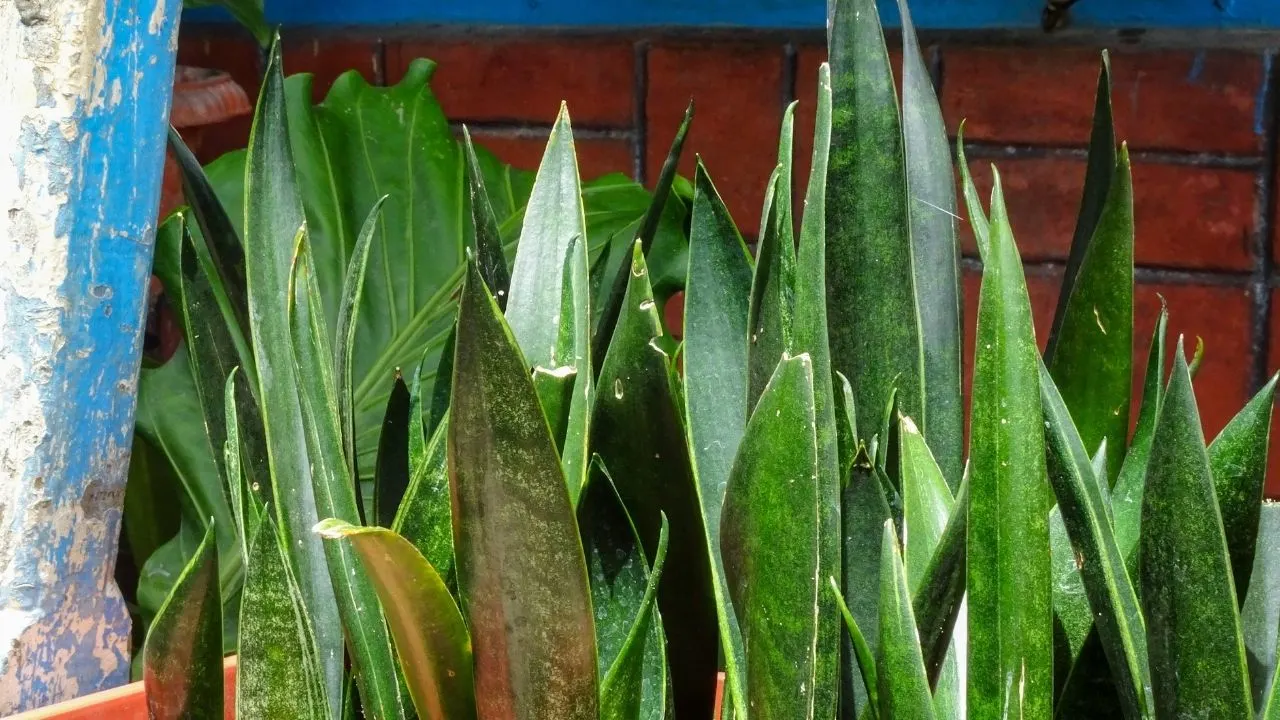
Sansevieria Zeylanica
Back to the tall sword-like shape for which this species is better known.
The Zeylanica doesn’t disappoint in this regard. Reaching 2.5 feet, the tall leaves are usually a striking mix of darker and lighter green areas.
10. Sansevieria Cylindrica “Boncel”
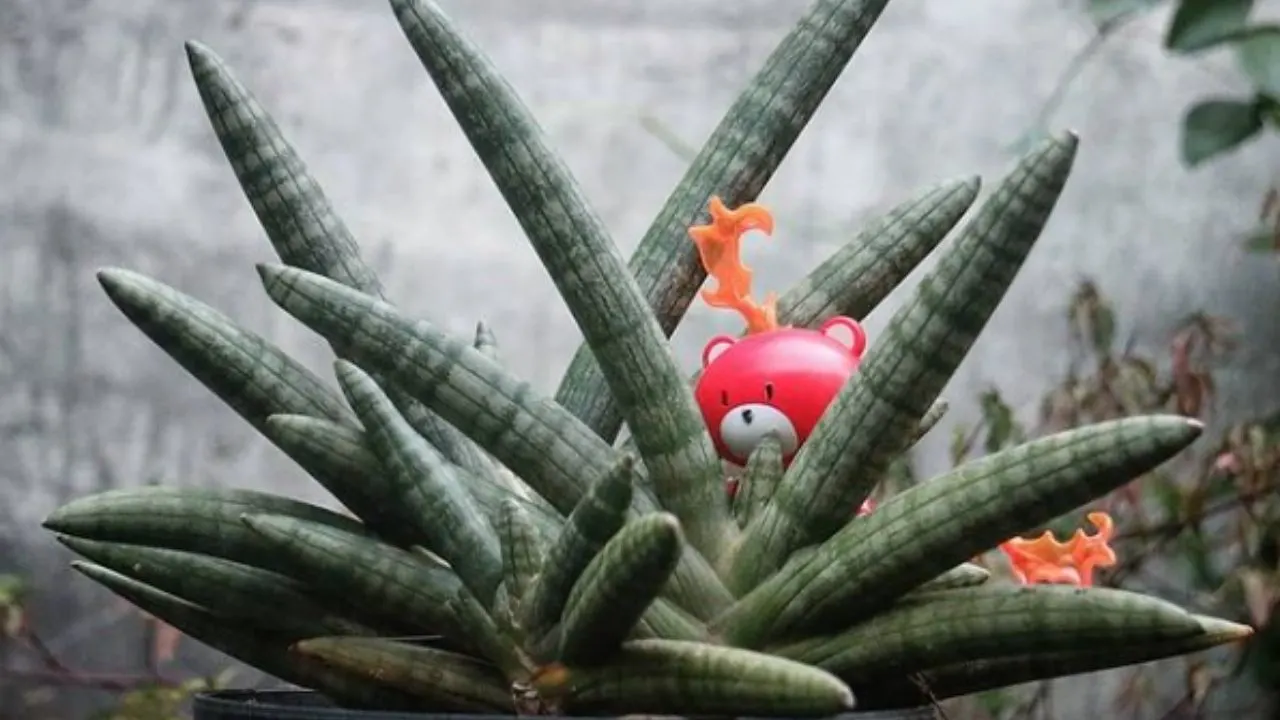
Sansevieria Cylindrica Boncel Photo Credit: @siling_bearguy on Instagram!
This guy is also often known as the starfish, and you’ll not need any help to see why.
It also lives up to its name as a succulent. The leaves are fleshy and thick in appearance.
They can grow absolutely massive – up to seven feet!
This is also one version that will commonly produce flowers.
11. Sansevieria Trifasciata ‘Cylindrica’
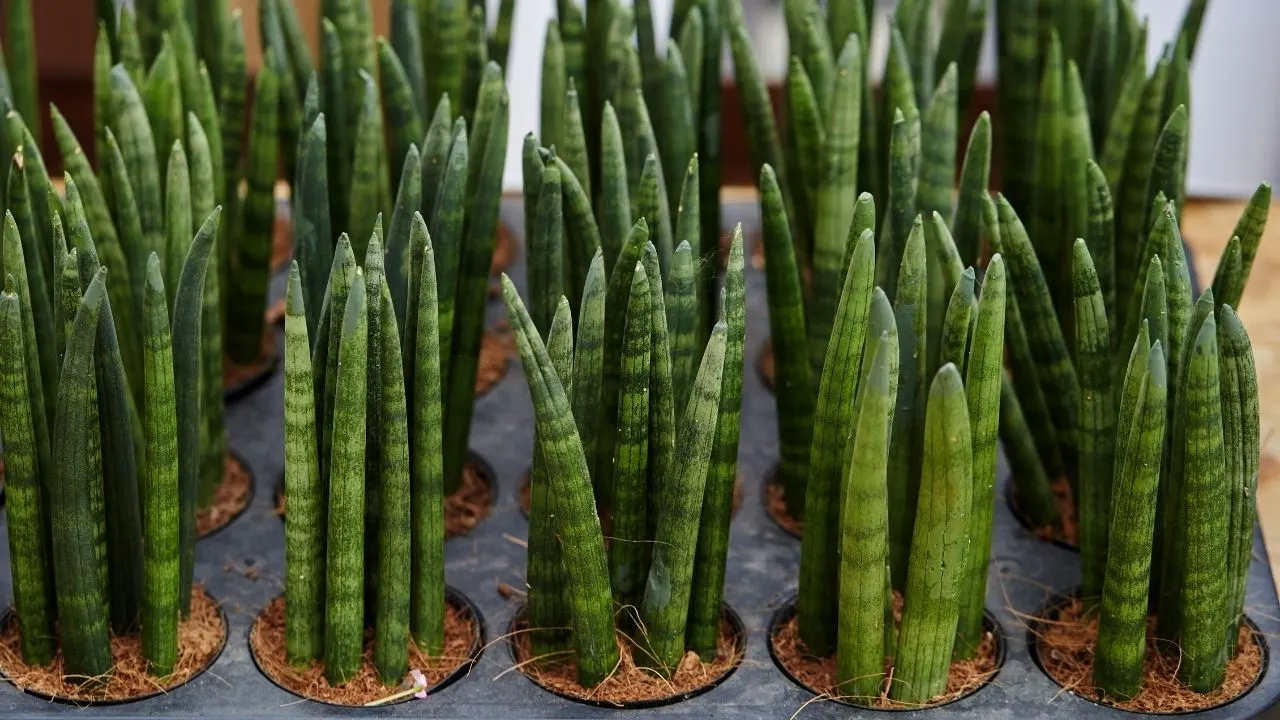
Sansevieria Trifasciata ‘Cylindrica’
Getting its name from the slim but long tubular-shaped leaves, you can expect growth of up to 2 meters in length, growing in an upright fashion.
12. Dwarf Sansevieria
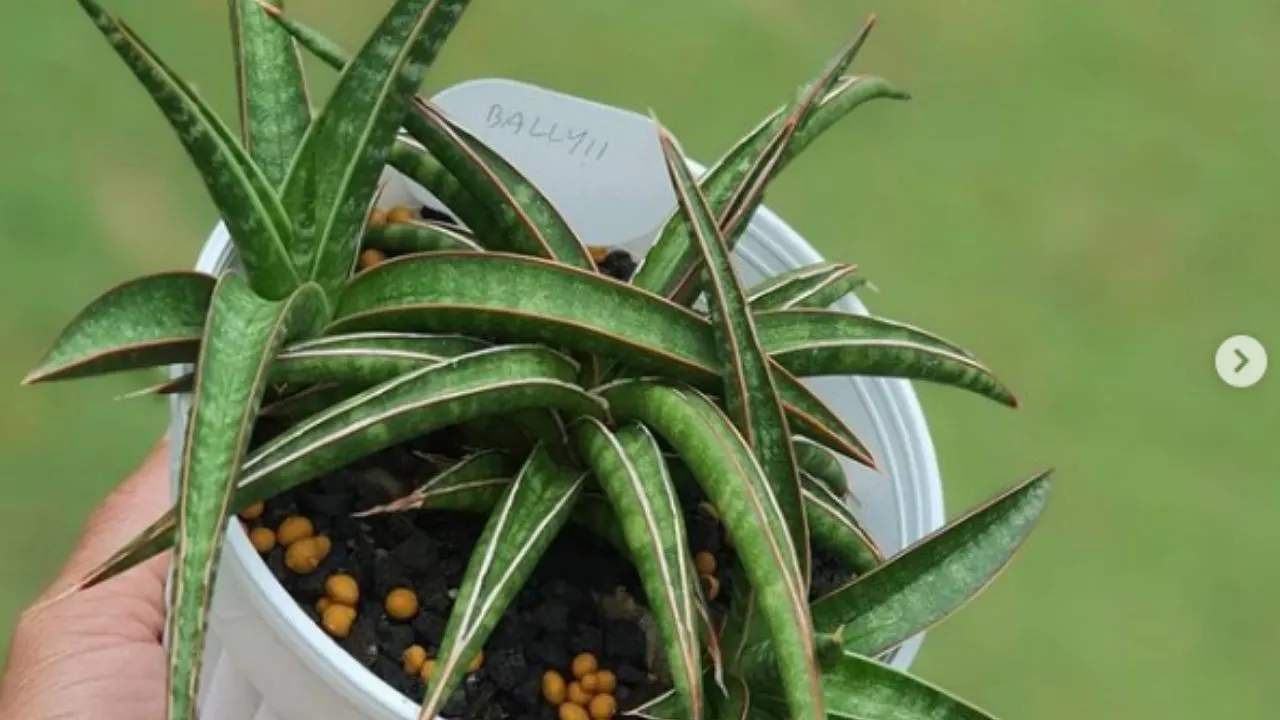
Dwarf Sansevieria Photo Credit: @Sansevieria.in.a.mug on Instagram!
Is space a problem? Then get a little baby Sansevieria!
The Dwarf is also known as the Sansevieria ballyi. The leaves grow in a star or rosette form and usually get no bigger than four inches in length.
13. Sansevieria Parva
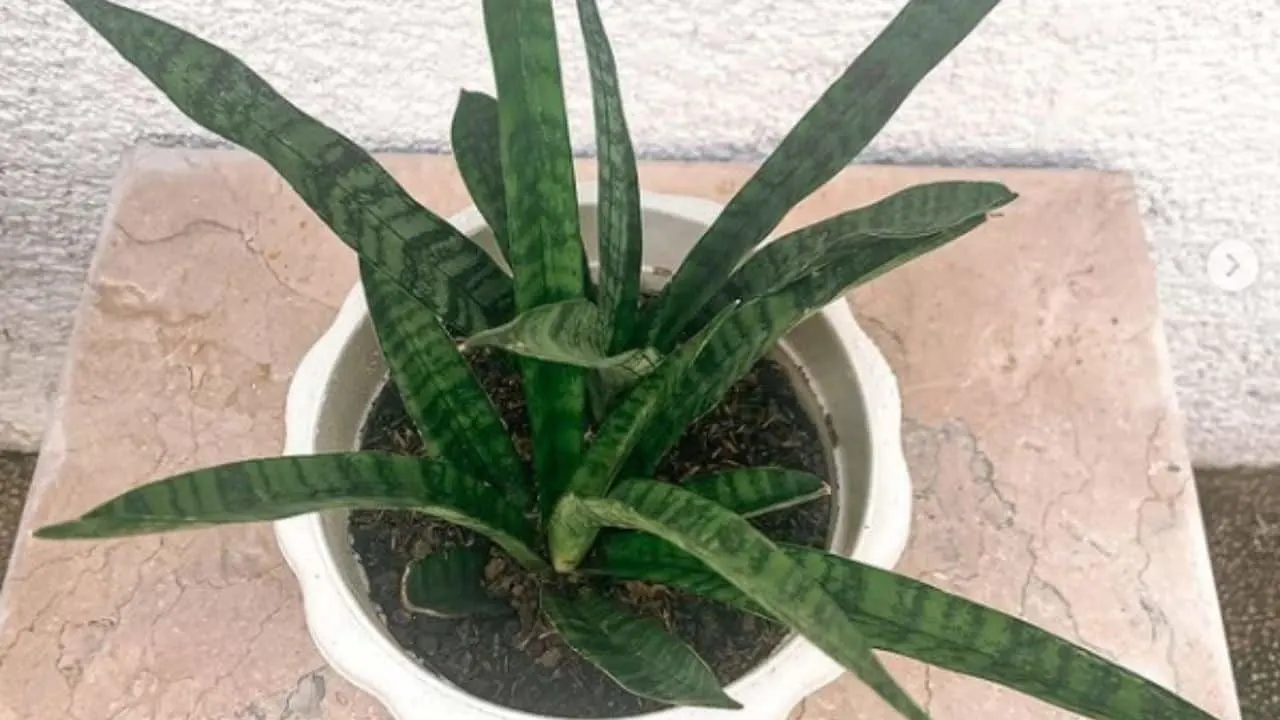
Sansevieria Parva Photo Credit: @greensindahouse on Instagram!
The Sansevieria Parva always looks to me like pea pods from a slight distance. Thin leaves with the trademark stripes reach 16 inches long.
Flowers, when they do happen, are often with a pinkish hue.
14. Sansevieria Bacularis
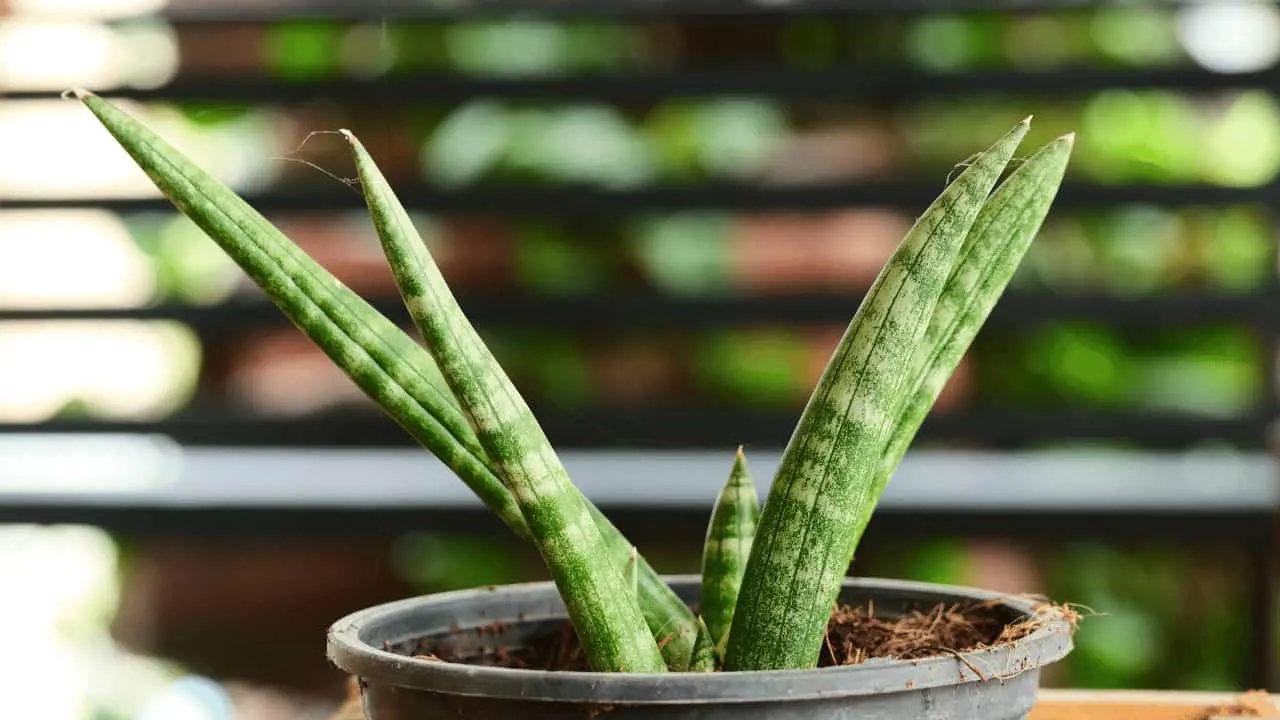
Sansevieria Bacularis
Tall with leaves that have soft tips, the Sansevieria bacularis is a dark green color with lighter green hues.
If you’re interested in taking care of this Sansevieria variety, take a look at its care guide here.
15. Sansevieria Burmanica
Whilst many Sansevieria originate in Africa, the burmanica hails from India.
The leaves are the same color as grass, and the borders can begin to go grey or white with age!
16. Sansevieria Francisii
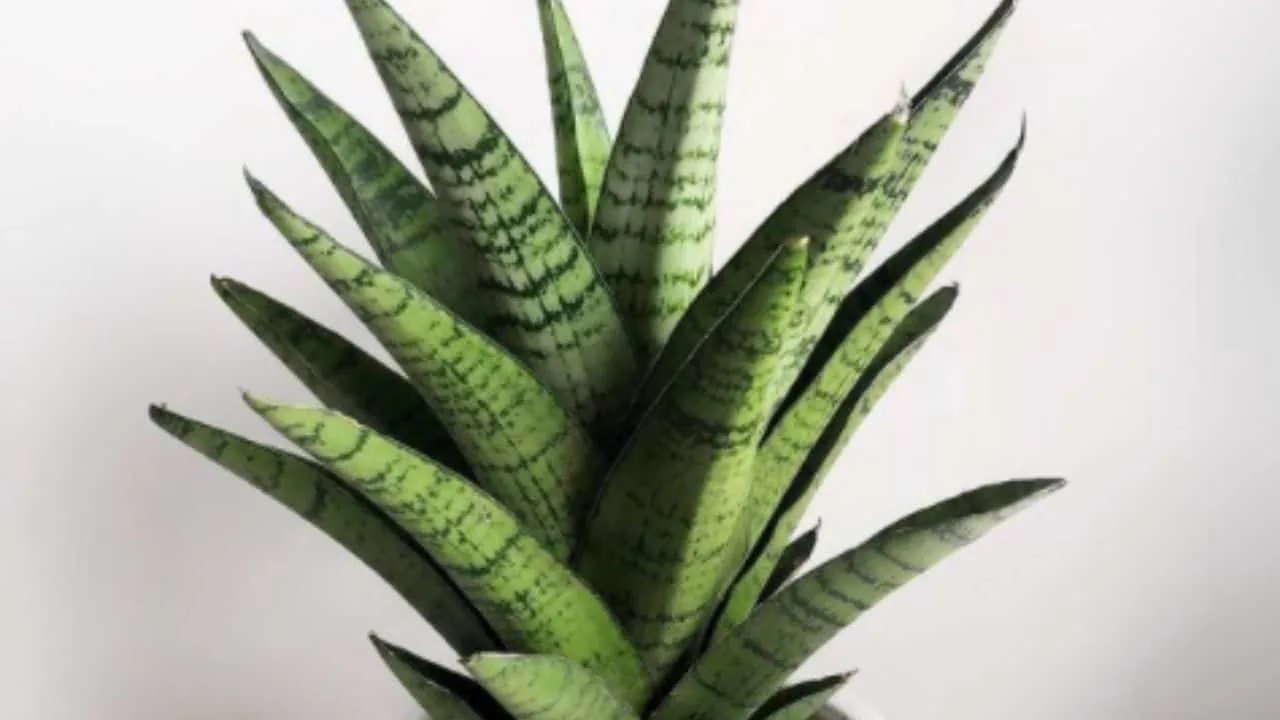
Sansevieria Francissi Photo Credit: @aes.thea.tically on Instagram!
A gorgeous and quirky version, the francisii looks a little bit spiky.
Made of small light and dark green leaves, this one is perfect for adding a little edge to your window ledge.
17. Sansevieria Bantel
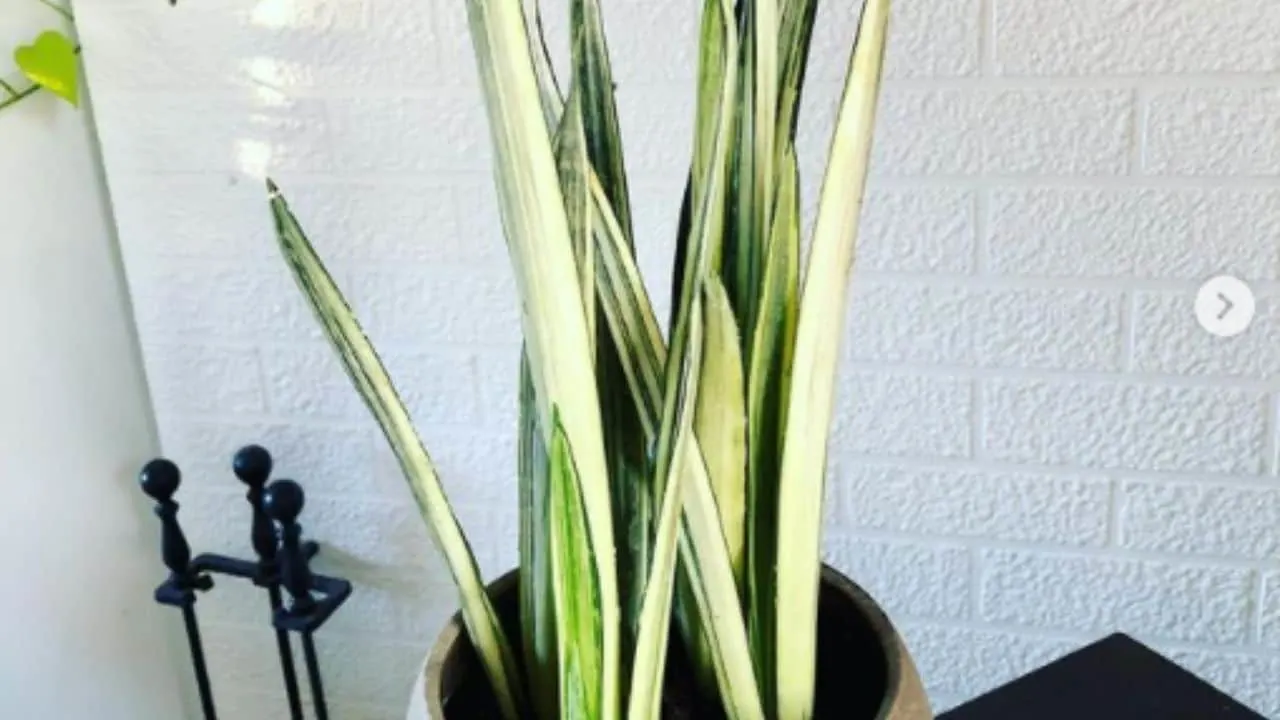
Sansevieria Bantel Photo Credit: @sydslittleforest on Instagram!
Often known as the White Sansevieria, this is a commercial cultivar of the Sansevieria trifasciata.
You will recognize this one for its white appearance, whilst it maintains all of the easy-care properties of the standard Sansevieria trifasciata.
18. Sansevieria Cleopatra

Sansevieria Cleopatra Photo Credit: @i4rd on Instagram!
The edges of the leaves on this plant are brown.
They’re supposed to look like that! So don’t panic – you are not likely under watering it!
19. Sansevieria Liberica
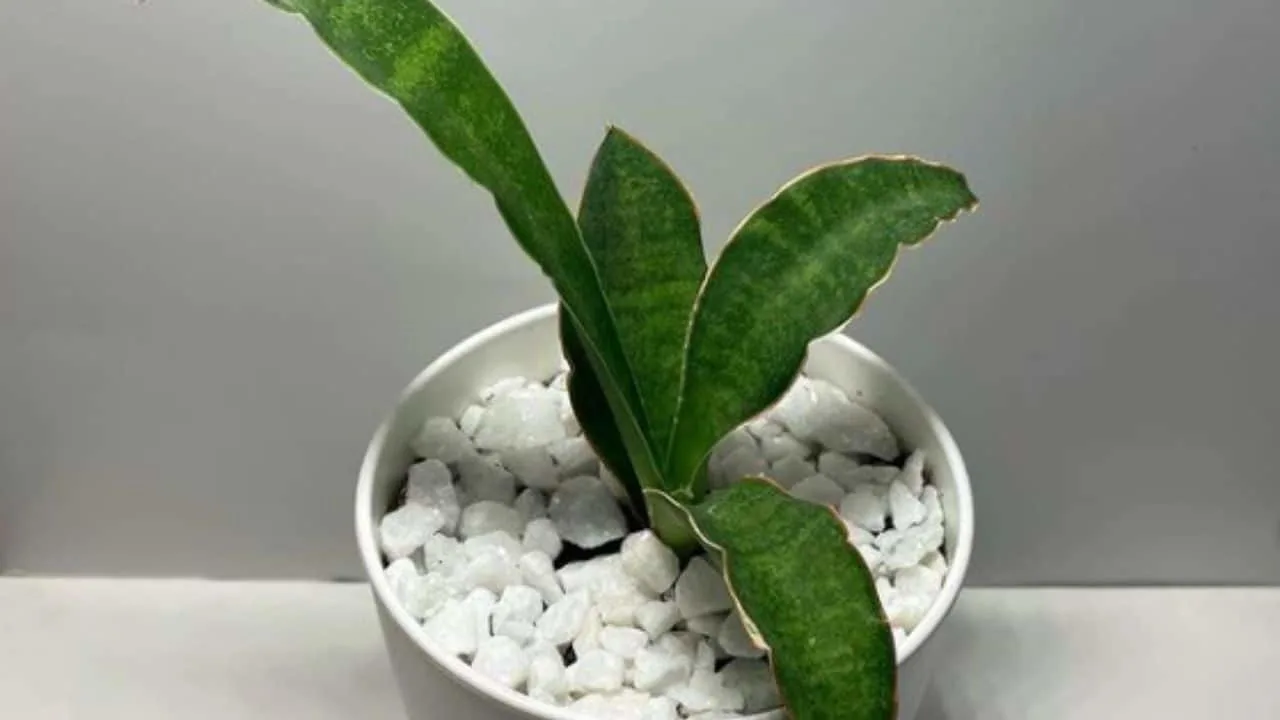
Sansevieria Liberica Photo Credit: @joselojaoficial on Instagram!
Originating in West Africa, the Liberica has broad dark green leaves that begin to grey with age.
The edges of the leaves have a slight wave to them, making for irregular and more relaxed appearance.
20. Sansevieria Gracilis
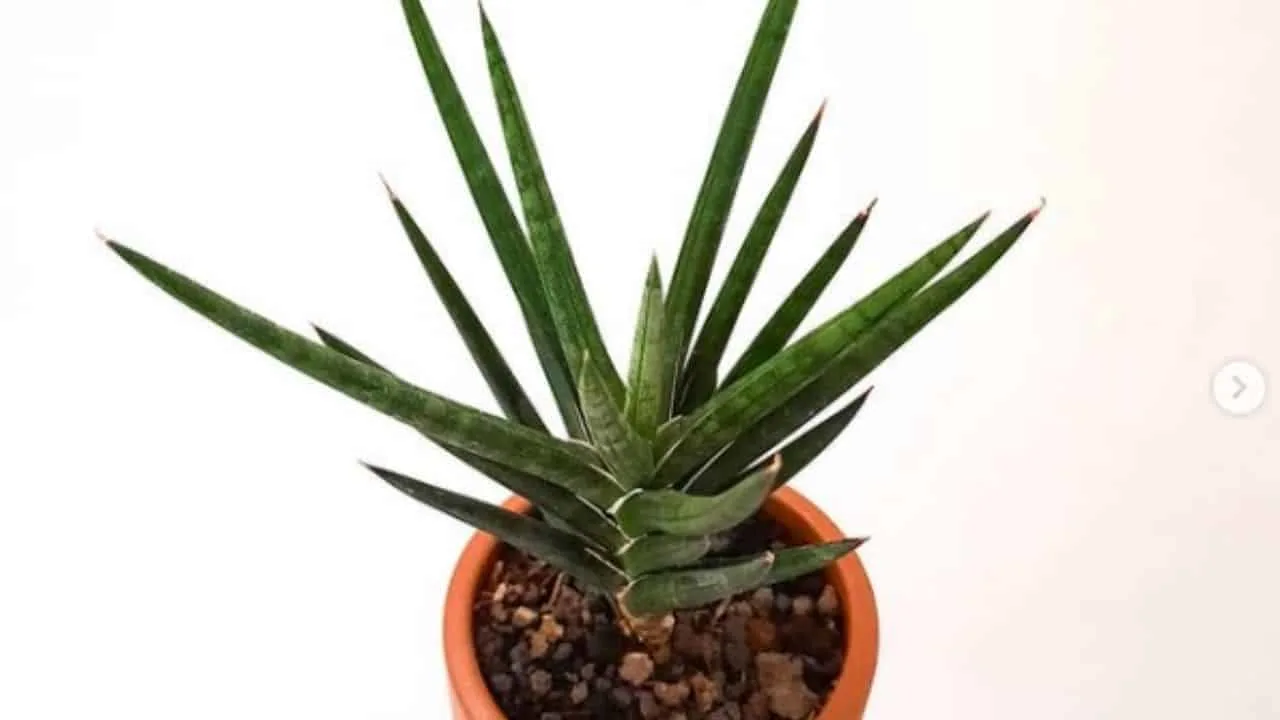
Sansevieria Gracilis Photo Credit: @planta.houseplant on Instagram!
Long and kind of pointy, the gracilis offers a slightly lighter green color than other variants.
21. Sansevieria Raffillii
We just love the name of this one!
A typical Sansevieria, the leaves grow upright and greenish-blue, changing color as the plant matures.
22. Sansevieria Senegambica
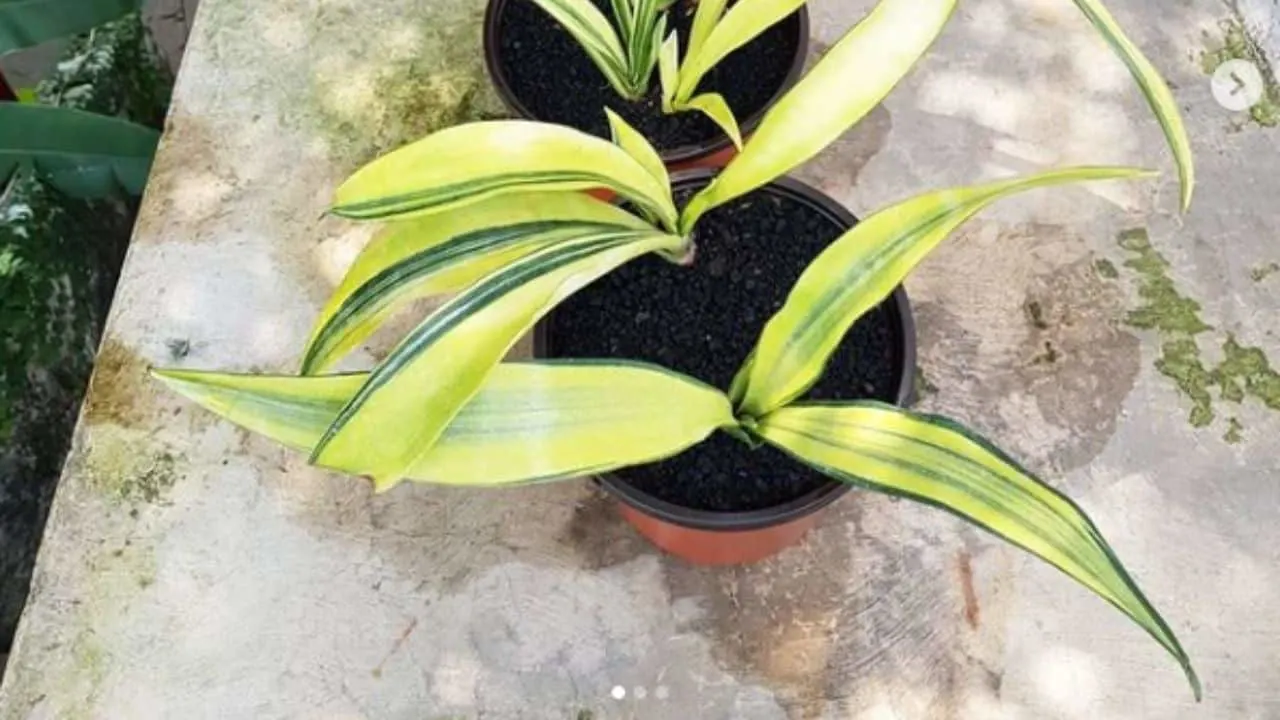
Sansevieria Senegambica Photo Credit: @Sansevieria.idn on Instagram!
This version gives a really nice tropical vibe in any home with upright lush leaves. There are usually four leaves per plant.
Flowers are common on this variant, usually blooming white and appearing a delicate purple in the sun.
23. Sansevieria Subspicata
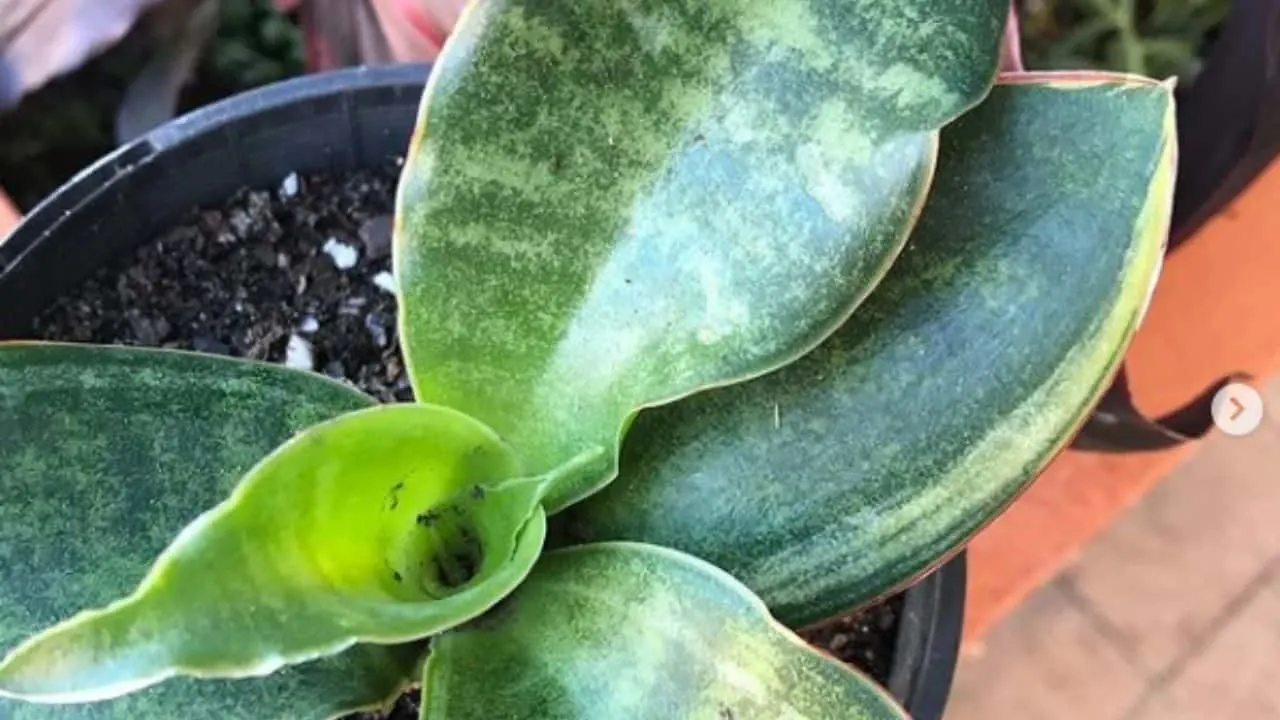
Sansevieria Subspicata Photo Credit: @aussiefatplants on Instagram!
Bluish-green leaves are the trademark of this sub-Saharan variant of Sansevieria.
With its easy-to-take care and damage-resistant characteristic, it is the perfect option for beginners.
24. Sansevieria Pinguicula
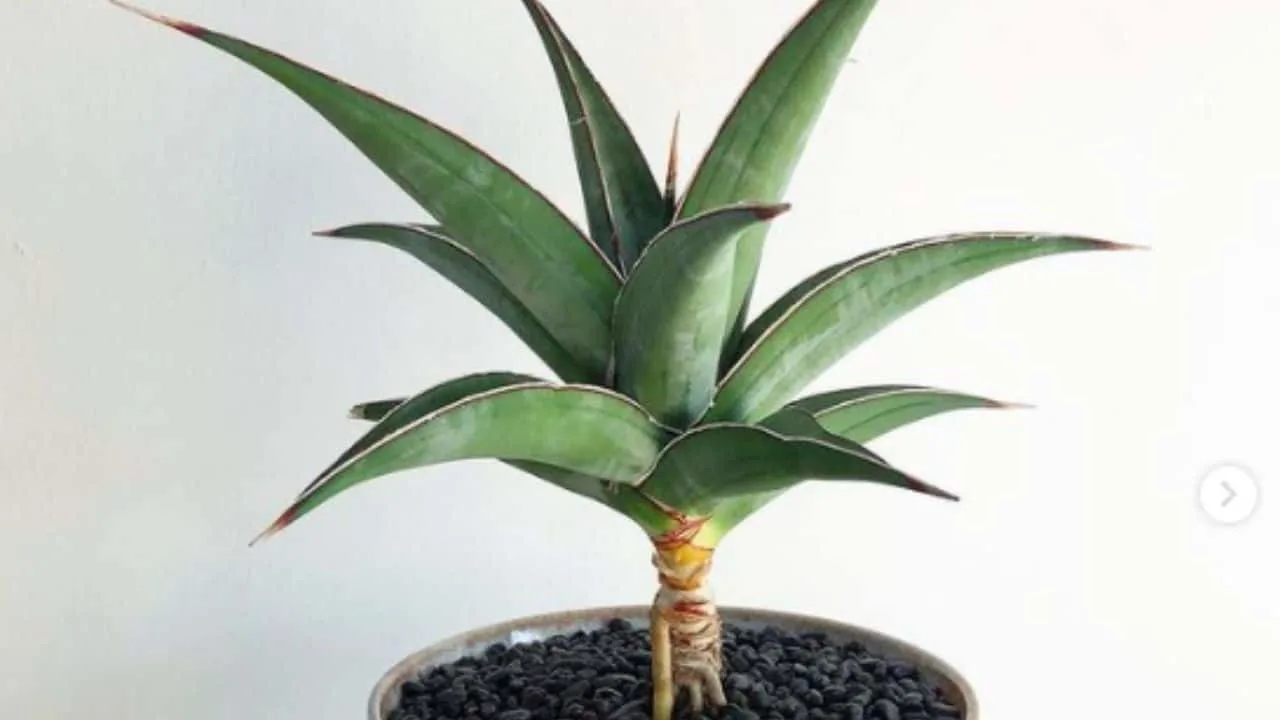
Sansevieria Pinguicula Photo Credit: @momojeano on Instagram!
This is a really bizarre version of the Sansevieria, due to the way it grows above ground.
It takes its name from the Latin for “fat” given the way the leaves look.
Often mistaken as a dwarf variety or even an unrelated plant such as an agave, the Sansevieria Pinguicula will certainly give you some diversity amongst your Sansevieria collection.
25. Sansevieria Whale Fin

Sansevieria Whale Fin Photo Credit: @plant_ing_joys on Instagram!
If you want a bit of drama and height, then perhaps you should look to this option.
Not surprisingly given the name, the plant’s leaves have a unique shape that bears resemblance to a whale fin.
This beauty can grow to over four feet in height!
That, plus its easy care features, makes it perfect for large hallways, lobbies of offices or residential buildings, and landings.
26. Sansevieria Samurai
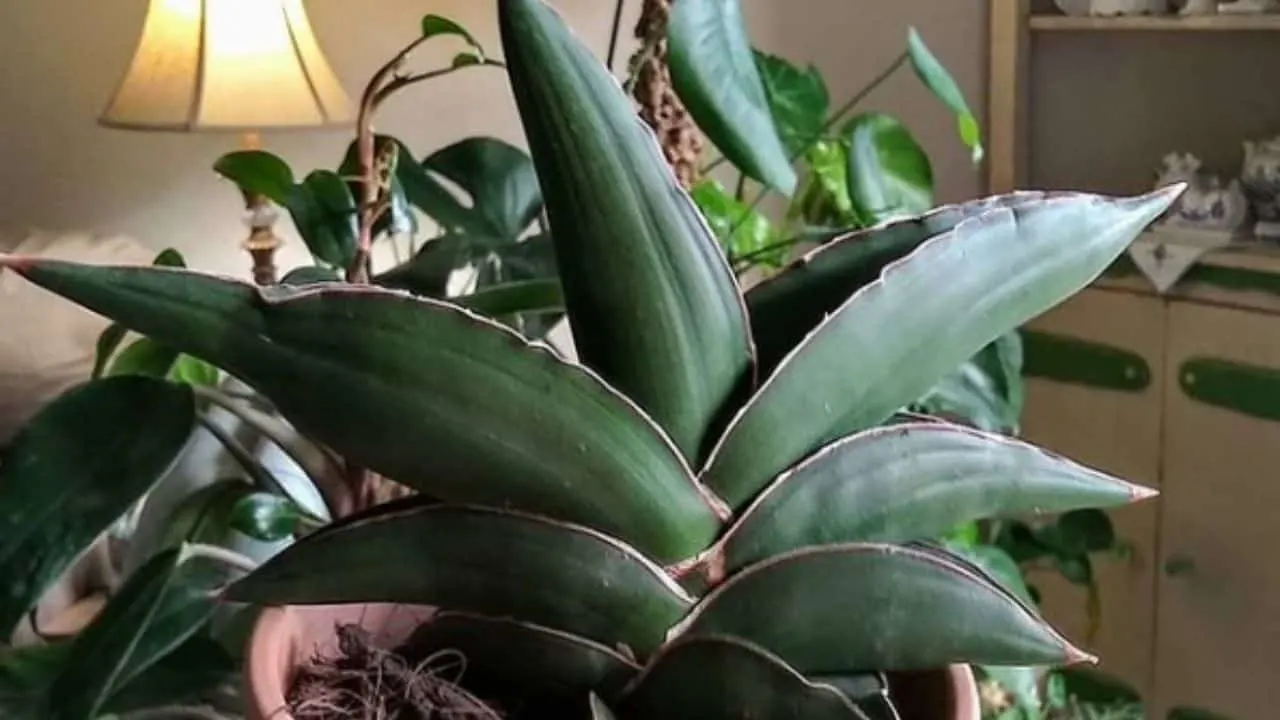
Sansevieria Samurai Photo Credit: @carmenwhiteheaddesigns on Instagram!
The unusual zig-zag pattern of the samurai makes this quirky plant a talking point.
It is also known as the blue Sansevieria for its gorgeous colored leaves.
We love this one so much there is a whole care guide devoted to keeping the Sansevieria Samurai happy here.
27. Sansevieria Silver Queen
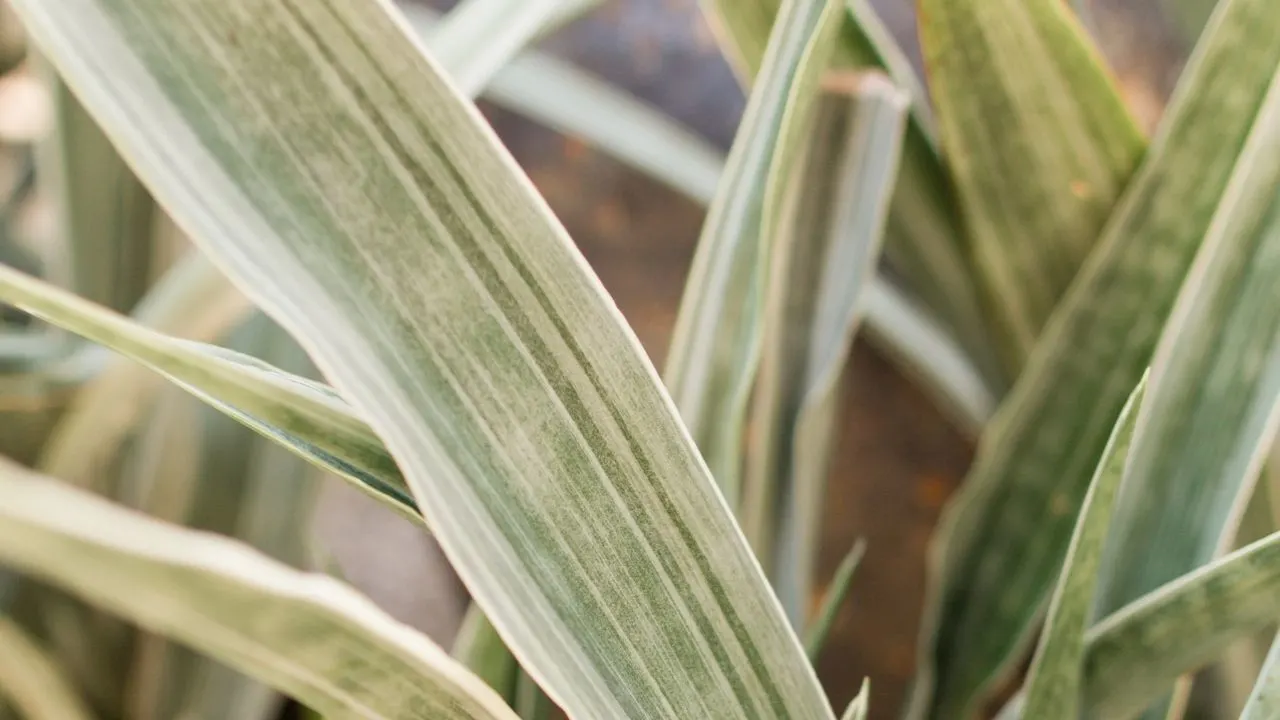
Sansevieria Silver Queen
The silvery leaves of this queen are certainly striking.
Stick this one amongst your plant collection for a dash of sparkle! If you fancy getting yourself one, read up on how to care for it in our care guide.
28. Sansevieria Trifasciata ‘Twist’
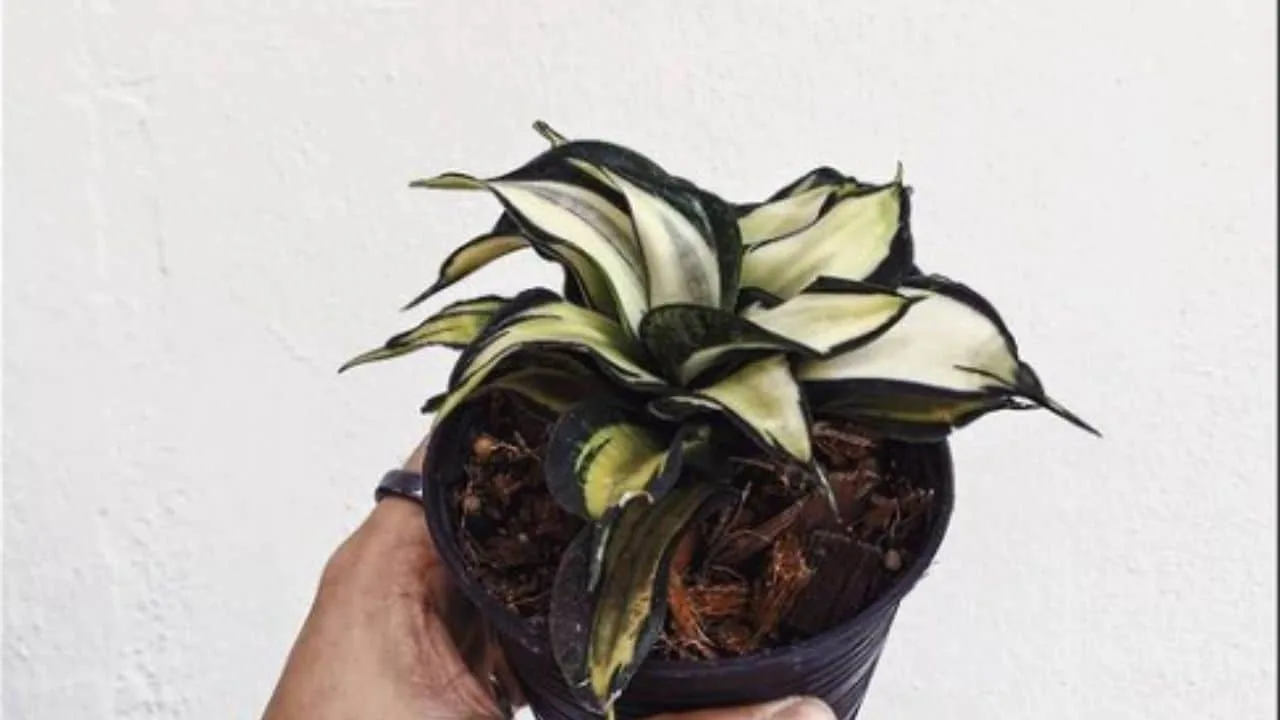
Sansevieria Twist Photo Credit: @foliage_owl on Instagram!
No prizes for guessing what this type looks like.
Turns and twists are the trademark feature of this type of Sansevieria. Due to the way it grows the Sansevieria twist won’t get much taller than 2 feet.
29. Sansevieria ‘Golden hahnii’
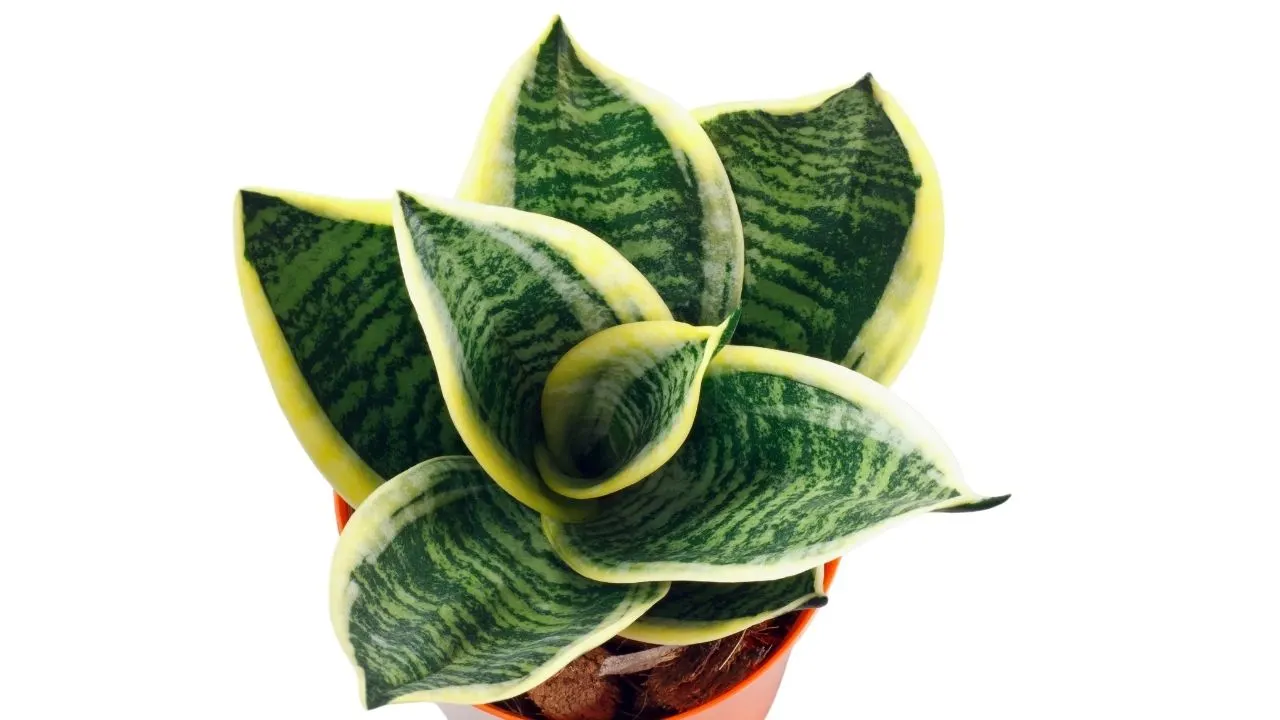
Sansevieria ‘Golden hahnii’
Beautiful yellow and green colors coupled with a short, rosette arrangement makes this little one a beautiful addition to any windowsill or table.
30. Sansevieria ‘Desert’
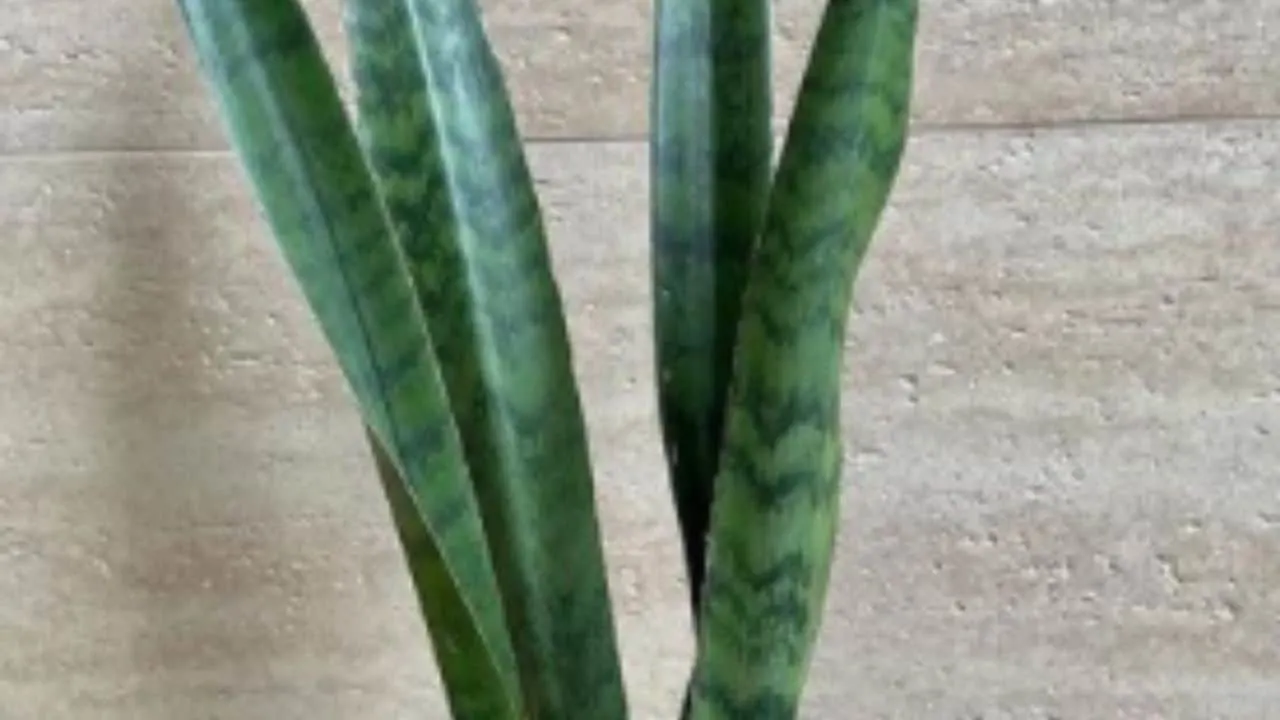
Sansevieria ‘Desert’ Photo Credit: @plantexpressph on Instagram!
Don’t forget the desert – also known as the rhino grass – when adding to your collection.
Tall and striking, it is the perfect choice for those looking for a wow factor in their living room.
31. Sansevieria Kirkii
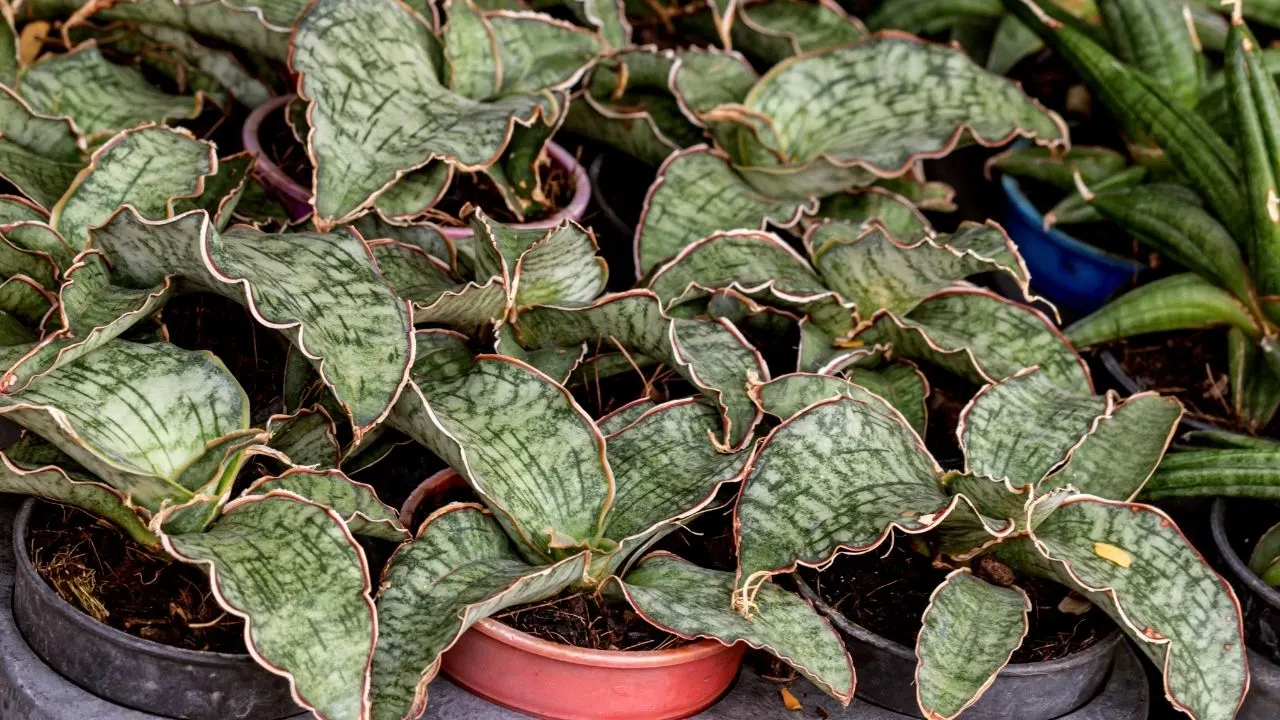
Sansevieria Kirkii
The “star” plant is another variant that I keep happily in my home.
The leaves fan out in a star shape making for a particularly pleasant aesthetic. Dark green leaves add to the look.
32. Sansevieria Whitney

Sansevieria Whitney Photo Credit: @plant_ing_joys on Instagram!
The Whitney grows up to twenty inches and has a typical Sansevieria appearance, with tall sword-like leaves growing in an upward pattern.
Caring for your Sansevieria
You may struggle to pick which Sansevieria you go for next given this extensive list of options.
There are just too many Types of Sansevieria!
However, one thing you will likely not struggle with is keeping it alive! The Sansevieria species is notoriously easy to care for.
All you will likely need to do is ensure the soil consistency is light enough to promote good drainage, and that you don’t overwater.
You can keep any variety of Sansevieria indoors easily, as long as it has access to bright indirect sunlight.
Make sure to check out our in-depth Sansevieria Care Guide to make sure you provide this darling with everything it needs!
Frequently Asked Questions About The Types of Sansevieria
Which type of Sansevieria is best for keeping as a houseplant?
The short answer is all of them! The whole species is well-known for being low maintenance and really hard to kill! So, there is no reason not to get yourself one.
Do all Sansevieria look the same?
Though they almost have the same characteristic appearance, the great thing about this plant species is there is so much diversity. From short dwarf varieties, differences in color, and those that can grow to over 4 feet tall, you have plenty to choose from.
What Sansevieria should I pick for a huge room?
Go for a tall growing variety that will dominate the space. The Sansevieria Laurentii gets to around our feet in height if you are interested.
Conclusion About Types of Sansevieria
If you are developing your Sansevieria collection we hope this little snapshot of what is available helps you on your way to collect all Types of Sansevieria.
! Please share your pictures of your collection with us!

Daniel has been a plant enthusiast for over 20 years. He owns hundreds of houseplants and prepares for the chili growing seasons yearly with great anticipation. His favorite plants are plant species in the Araceae family, such as Monstera, Philodendron, and Anthurium. He also loves gardening and is growing hot peppers, tomatoes, and many more vegetables.

